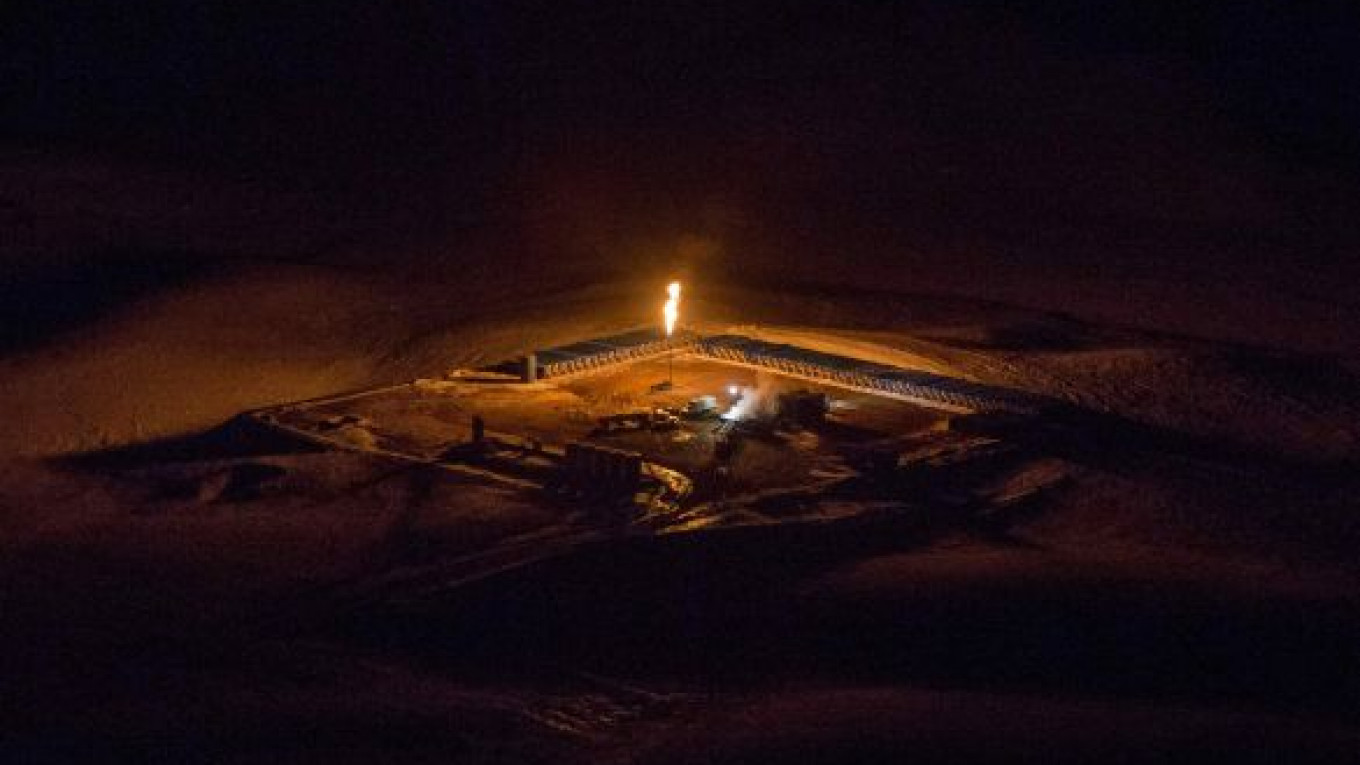OSLO — Statoil, one of the most successful oil explorers in recent years, sees offshore Angolan and Russian shale as the industry's next big plays and considers U.S. shale oil overhyped, its exploration chief Tim Dodson said.
The firm, which has expanded from its traditional North Sea base to all continents over the past decade, also expects to spend heavily on exploring in Brazil, Tanzania and the Arctic Barents Sea, possibly maintaining its record-high exploration budget, Dodson said in an interview.
Statoil, already a top offshore producer, needs new discoveries as it aims to lift production by a quarter to more than 2.5 million barrels a day this decade and diversify its portfolio, still dominated by North Sea assets.
"I am very excited about [the Russian] shale opportunity," Dodson said. "There is a huge, huge upside if it works," he said, referring to the firm's preliminary deal with Rosneft in June to explore for shale in the Samara region in western Siberia's Volga-Ural basin.
Russia's shale oil potential is still not fully mapped, but the Bazhenov formation in Siberia is already considered one of the largest, and ExxonMobil teamed up with Rosneft this year to begin drilling.
Dodson said Norwegian state-controlled Statoil hoped to finalize its own deal with Rosneft this year and could drill one or two wells in Siberia as soon as 2014 to test the region's potential.
"It looks very, very much like the Bakken [in the U.S.] from a geological point of view in that you have limestone that can be fracked," said Dodson, a Briton who joined Statoil in 1985 and rose through the ranks.
"The geology is absolutely fantastic, and the scale of it is just enormous … the Bakken looks minute compared to it."
Overhyped Shale Oil
The Bakken formation in North Dakota and Montana has become in recent years the prime producer of shale oil in the world as its good geology, built-up infrastructure and supportive regulatory framework aided the ramp up.
Statoil holds about 330,000 acres (134,000 hectares) in the Bakken. Dodson said the firm already had the acreage to increase U.S. onshore production to 300,000 barrels of oil equivalent a day by 2020 from 167,000 barrels a day last year, and it was mostly looking to optimize its assets.
But the Bakken is unique and other North American formations contain mostly gas, a much less valuable commodity, reducing the continent's attractiveness.
"As a company, we question a little bit all the hype around shale oil. How big can it really be? Of course, it is significant … but it is really only the Bakken? [And] you don't hear anything else other than the Bakken from an oil perspective," he said.
Statoil revamped its exploration strategy at the start of 2011, boosting spending, taking more risk, and putting Dodson in charge of a division that was struggling, even on its home turf.
The gamble paid off. The firm's reserve replacement ratio, which indicates how much oil it finds in comparison with its production, jumped to 117 percent in 2011 and 110 percent in 2012 from 73 percent in 2009 and 87 percent in 2010.
That puts it well ahead of Royal Dutch Shell's 85 percent ratio and BP's 77 percent last year, and on par with Chevron's 112 percent.
"Where are our peers? They are in very different places," Dodson said. "If you look at all the statistics, there are three companies that really stand out in the last two, three years: ourselves, ENI and Anadarko," he said, referring to their geographic expansion and exploration success.
Next Gamble
Its biggest constraint may be money as its exploration spending will hit a record $3.5 billion this year and its total capital expenditure has grown by 40 percent to $19 billion since 2010.
It is spending so much on investments that its cash flow does not cover the outlays and needs to raise money, such as from asset sales, to cover dividends.
"Next year we have a very attractive portfolio, so we may spend $3.5 billion again. But that number is not carved in stone."
Its next big gamble is likely to be Angola on Africa's west coast, where it has secured several blocks and plans to start drilling next year.
"The big question mark and big hope is Angola," Dodson said. "But it is high-risk, it is not a given that the presalt [formation] in the Kwanza Basin in Angola will work. I think it will."
Angola is attractive as its geology is similar to Brazil's since they were part of the same basin before the two continents drifted apart.
Statoil has parts of five blocks, plans to start drilling in the first quarter of 2014 and has committed to drilling eight wells over a two-year period.
It has also teamed up with BP to explore for oil on Australia's south coast but does not expect to drill there for several years.
It will continue to drill heavily next year in the Arctic Barents Sea, not far from its Johan Castberg discovery, in Tanzania, where it plans a $10 billion LNG facility, and Brazil, where it is the second-biggest producer after Petrobras.
A Message from The Moscow Times:
Dear readers,
We are facing unprecedented challenges. Russia's Prosecutor General's Office has designated The Moscow Times as an "undesirable" organization, criminalizing our work and putting our staff at risk of prosecution. This follows our earlier unjust labeling as a "foreign agent."
These actions are direct attempts to silence independent journalism in Russia. The authorities claim our work "discredits the decisions of the Russian leadership." We see things differently: we strive to provide accurate, unbiased reporting on Russia.
We, the journalists of The Moscow Times, refuse to be silenced. But to continue our work, we need your help.
Your support, no matter how small, makes a world of difference. If you can, please support us monthly starting from just $2. It's quick to set up, and every contribution makes a significant impact.
By supporting The Moscow Times, you're defending open, independent journalism in the face of repression. Thank you for standing with us.
Remind me later.






